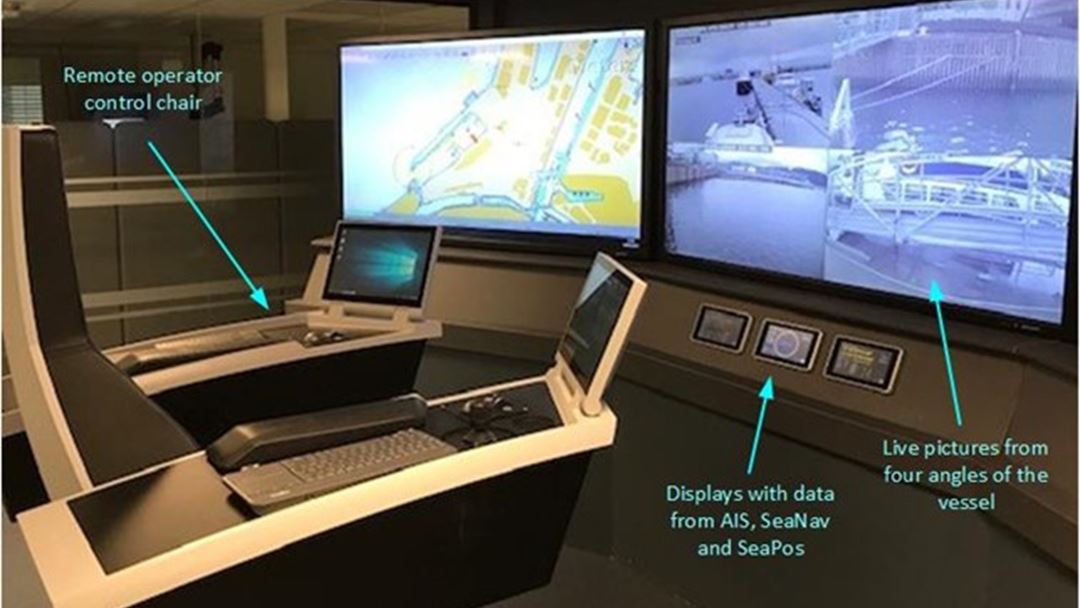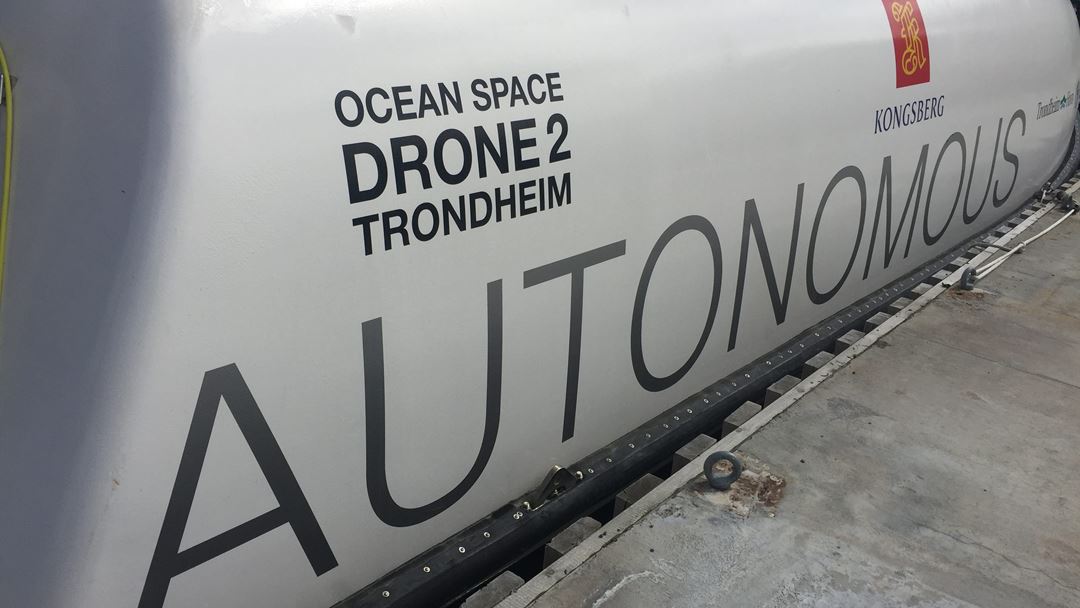Technical objectives
The technology installed will be used to facilitate the development of autonomous ships, where it will be necessary to extend and strengthen the existing infrastructure in the area.

The technical objectives of this NAVISP Element 3 project have installed and demonstrated the following infrastructure at the Trondheimsfjorden Test Area for Autonomous Ships:
- Test Area Control Centre: A Test Area Control Centre (TACC) has been established at Pirsenteret, Trondheim. TACC operates as a monitoring and control centre for the DGNSS reference station, the AIS base station, the MBR network and the DGNSS monitoring station. TACC can also operate as a remote-control centre for the vessel Ocean Space Drone 1. From TACC it is possible to operate the vessel remotely.
- GNSS monitoring station: A GNSS monitoring station has been installed at Pirsenteret, Trondheim. The unit is in the Test Area Control Centre (TACC). A GNSS antenna and an IALA beacon antenna are mounted on the roof of Pirsenteret for signal reception. The GNSS monitoring station receives IALA beacon corrections from the DGNSS reference station. The GNSS monitoring station is updated with software which generates RTCM 3 corrections (GPS, GLONASS, and Galileo).
- DGNSS reference station: A DGNSS reference station has been installed. The DGNSS reference station broadcast GPS and GLONASS RTCM 2.3 corrections on 299 kHz (IALA beacon corrections).
- AIS base station: An AIS base station has been installed at Trondheim Harbour. The antennas for the AIS base station are mounted on the roof of the container.
- VDE Satellite terminal: The Kongsberg VDES (VHF Data Exchange System) satellite terminal, VDES 300, has during the project been under development. However, a unit has been made available for the Trondheimsfjorden Test Area for future tests.
- Mobile Broadband Radio: A Maritime Broadband Radio (MBR) have been installed. A test with the Ocean Space Lab vessel equipped with a MBR unit was performed to estimate the MBR coverage from the MBR located at Pirsenteret. In connection with another project, another MBR unit has been installed on a location at the other side of the Trondheimfjord, at Fosen. The two stationed MBR units give a good communication coverage for the test area and makes it possible to perform tests in the area with a closed communication network.
- Data Centre: A Data Centre has been developed. The goal is to establish a platform for managing the data accumulated in the test area and making it possible to run data analyses and to gain awareness before and during a test.

Outcome and expected results
The expected outcome of the project is an infrastructure installed in parts of the Trondheimsfjorden test area that supports safe and efficient test campaigns. This includes an infrastructure to provide safe navigation and position information to test campaigns and normal maritime traffic. The broadband communication stations will ensuring timely, safe and robust exchange of data between test campaigns and central data management. This network will also be used by a shore control centre to be used in test campaigns. TACC – The Test Area Control Centre, for monitoring and control of the Test Area infrastructure and test campaigns. The TACC will also be used for analytic work like studies of remote control and human machine interactions. The Data Centre will be used for storage and analysis of data related to test campaigns and to display sensor data from the infrastructure.